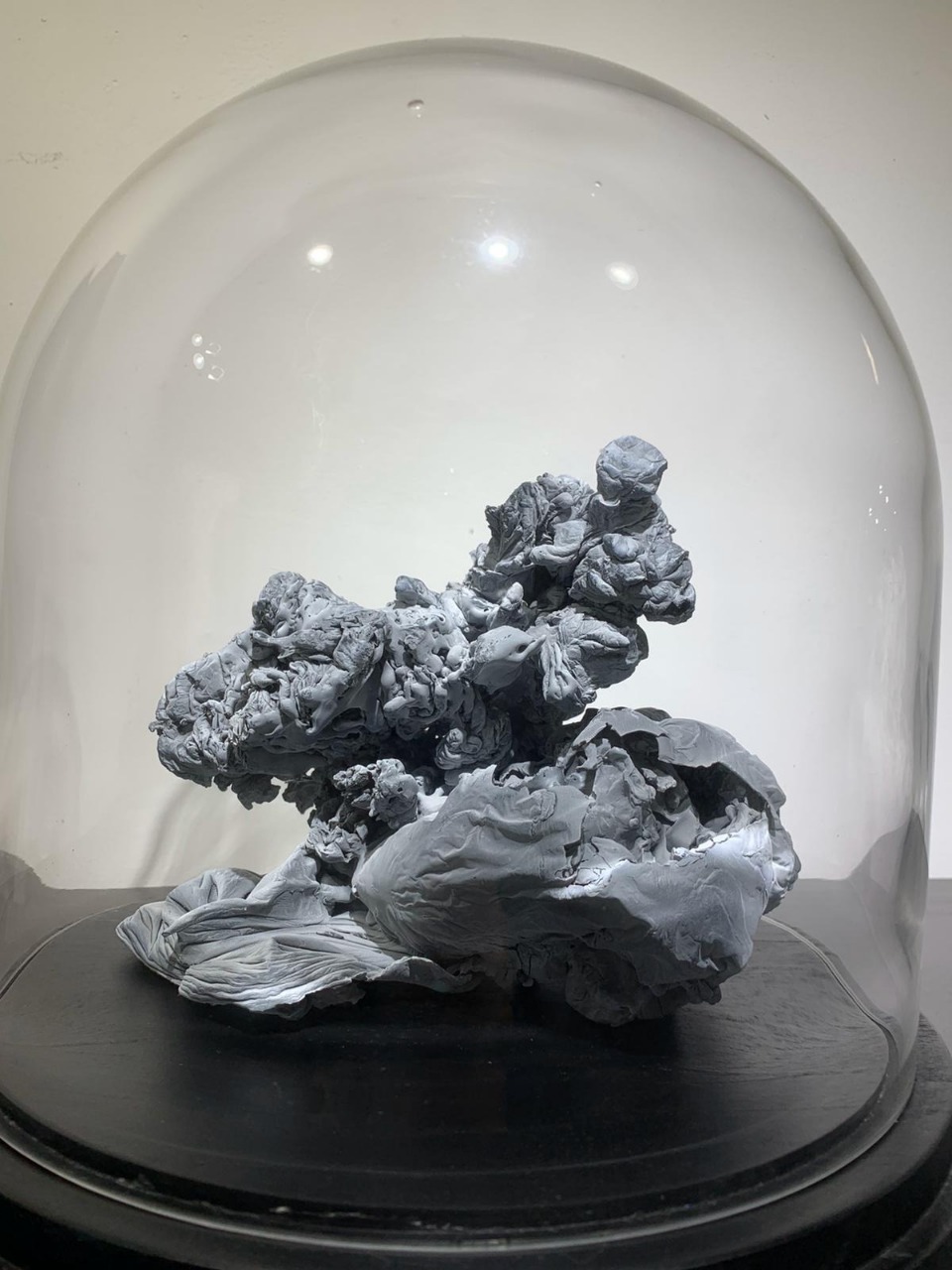Gene Kiegel is an American interdisciplinary artist. He experiments with innate material properties that express universal behavior. The Artist envisions what has preceded and what might proceed the Anthropocene: alternative worlds that are untouched by human activity, or exist as evidence of our lasting impact. The body of work resembles a collection of extracts from other worlds, comprised of biological and geological formations in sculptural format—seemingly alien yet deeply familiar.
This concept of a universal language came from experimentation with beeswax and begat exploration into new materials and their expressions. The deductive search for its essence generated self-organizing landscapes: monuments to forces at their pinnacle; organic architectures; synthetic flora in bloom.
All artwork is purposely left untitled to foster a variety of interpretations driven by the viewer’s personal associations, unhindered by the artist’s own. The hidden worlds that Gene Kiegel creates substantiate the existence of a universal language, expanding its presence and allowing the viewer to linger in these moments that comprise life.
"Art, in any shape of form, is the key to our continued survival."
Gene Kiegel New York, USA. April 16, 2020
Untitled. From the Impact series (2019)
180 х 180 х 60 cm, epoxy resinGene Kiegel’s Impact continues his exploration of universal code, which is manifested in this series through synthetic rather than organic material. Similar patterns emerge in the final forms, reasserting the presence of this universal language and nature’s powers of reclamation. At the same time, the forms appear somehow mutated, perhaps reflecting a landscape where the evidence of man’s activity has become irrevocably embedded into the earth’s geology.
In its physicality, the “Impact” series works manifest an unseen force exerted to its counterpart. The epoxy cast of force’s impact ignites a chemical reaction, which channels the universal language. The thrust of the work is at once physical and philosophical, juxtaposing themes of growth and decay, and probing mankind’s impact on the natural world. The artwork uncovers a new eco-system, suggesting that there can be no human action without nature’s reaction.
Gene Kiegel raises questions of legacy and preservation, or the forms natural life may take after its eradication. The series, which resembles coral or other natural structures, also investigates the relationship between creation and loss, as it relates to our future’s inevitable need to recreate what we have destroyed—and are irrevocably destroying still. The work inspires contemplation on creation, control, and loss, asking the viewer to consider the price that is paid when humankind indiscriminately exerts its will on our surroundings.
Untitled. From the Monument series (2017)
encaustic medium with embedded metalUntitled. From the Monument series (2017)
pigmented epoxy resin, copper and other ground metal pigmentsUntitled. From the Monument series (2017)
pigmented epoxy resin, copper and other ground metal pigmentsUntitled. From the Monument series (2017)
pigmented epoxy resin, copper and other ground metal pigmentsThe “Monuments” series considers the origins of landscapes. Using wax and metal, Gene Kiegel simulates the epic energy exchange as molten lava breaks from Earth’s core through the outer surface, finally succumbing to its solid state – this invasion is captured in its historical monumental format.
The works, which resemble magmatic rocks, derive from Kiegel’s interest in creation and destruction — seemingly binary forces that frequently inform, or allow for, one another. Destruction is both the end of one entity and the beginning of another: a matter ready to bear new life.




